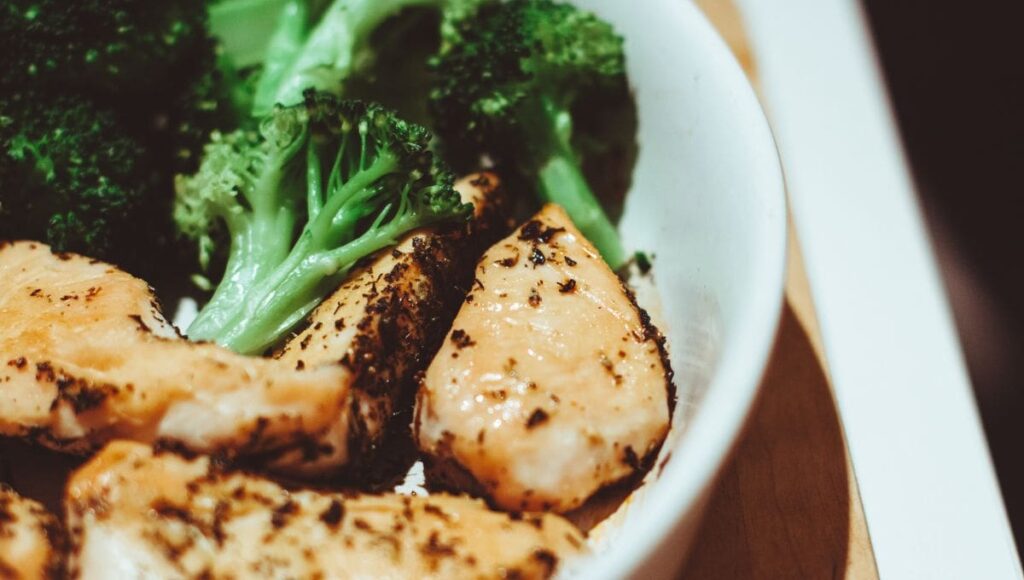Building a robust upper body is a common goal for many fitness enthusiasts. Developing the shoulders and chest not only enhances your physique but also contributes to overall strength and functionality. In this article, we will explore three scientifically backed strategies to bulk up your shoulders and chest more effectively. Each method is designed to maximise muscle hypertrophy and strength gains, ensuring you see results faster.
Understanding Muscle Hypertrophy
Before diving into the specific strategies, it is essential to understand the concept of muscle hypertrophy. Muscle hypertrophy refers to the increase in muscle size achieved through exercise, typically strength training. There are two primary types of hypertrophy:
- Myofibrillar Hypertrophy: This involves an increase in the size and number of myofibrils, the contractile fibres in muscle cells. It leads to stronger, denser muscles.
- Sarcoplasmic Hypertrophy: This involves an increase in the volume of sarcoplasmic fluid in the muscle cell, leading to larger muscles with more endurance capacity.
Effective training programs for bulking up should target both types of hypertrophy.
Strategy 1: Progressive Overload

The Principle of Progressive Overload
Progressive overload is the cornerstone of muscle growth. It involves gradually increasing the stress placed on muscles during training. This can be achieved by increasing the weight lifted, the number of repetitions, or the volume of sets over time.
Implementing Progressive Overload
- Incremental Weight Increase: Regularly increase the weight you lift. Aim for a 5-10% increase every two weeks. Ensure you maintain proper form to prevent injuries.
- Volume and Frequency: Increase the number of sets and repetitions. Start with three sets of 8-12 reps and gradually move to five sets as you progress.
- Time Under Tension: Focus on the duration your muscles are under tension. Slow down the eccentric (lowering) phase of your lifts to maximise muscle engagement.
Scientific Backing
A study by Schoenfeld et al. (2010) found that progressive overload is essential for muscle hypertrophy. The study demonstrated that subjects who increased their training volume over eight weeks saw significantly greater muscle growth compared to those who did not increase their training volume【Schoenfeld, B.J., et al., 2010】.
Strategy 2: Compound and Isolation Exercises
Importance of Compound Exercises
Compound exercises, such as bench presses, shoulder presses, and push-ups, engage multiple muscle groups and joints simultaneously. These exercises are crucial for building overall strength and muscle mass.
Key Compound Exercises for Chest and Shoulders
- Bench Press: Targets the pectoralis major, deltoids, and triceps. Variations like incline and decline bench press emphasise different parts of the chest.
- Overhead Press: Focuses on the deltoids and triceps while engaging the upper chest and stabiliser muscles.
- Push-Ups: A versatile exercise that can be modified to increase difficulty and target different muscle groups.
Role of Isolation Exercises
Isolation exercises target specific muscles, allowing for precise development and symmetry. These exercises are essential for addressing weaknesses and achieving balanced muscle growth.
Key Isolation Exercises
- Dumbbell Flyes: Target the chest muscles, particularly the outer pectoralis major.
- Lateral Raises: Focus on the medial deltoids, contributing to shoulder width and definition.
- Front Raises: Target the anterior deltoids, enhancing the overall appearance of the shoulders.
Scientific Backing
A study by Gentil et al. (2015) highlighted that a combination of compound and isolation exercises leads to superior muscle hypertrophy compared to compound exercises alone. The research demonstrated significant gains in muscle size and strength when both exercise types were included in a training regimen【Gentil, P., et al., 2015】.
Strategy 3: Optimal Nutrition and Recovery

The Role of Nutrition
Nutrition plays a pivotal role in muscle growth. Consuming the right balance of macronutrients—proteins, carbohydrates, and fats—is crucial for muscle repair and growth.
Protein Intake
Protein is the building block of muscle. Aim for a daily intake of 1.6-2.2 grams of protein per kilogram of body weight. Sources include lean meats, fish, eggs, dairy, legumes, and protein supplements.
Carbohydrates and Fats
Carbohydrates provide the energy needed for intense workouts, while fats support hormone production and overall health. Ensure a balanced intake of complex carbohydrates and healthy fats.
Importance of Recovery
Muscles grow during rest, not during workouts. Proper recovery protocols are essential for maximising muscle hypertrophy.
Sleep
Aim for 7-9 hours of quality sleep per night. Sleep is critical for hormone regulation, muscle repair, and overall recovery.

Active Recovery
Incorporate low-intensity activities like walking, swimming, or yoga on rest days to promote blood flow and reduce muscle soreness.
Scientific Backing
Research by Phillips et al. (2009) emphasises the importance of protein intake for muscle hypertrophy. The study found that individuals consuming higher protein diets experienced greater muscle growth and recovery post-exercise【Phillips, S.M., et al., 2009】. Additionally, a study by Hausswirth and Mujika (2013) highlights the critical role of sleep in athletic performance and muscle recovery【Hausswirth, C., Mujika, I., 2013】.
Conclusion
Bulking up your shoulders and chest faster requires a combination of progressive overload, a mix of compound and isolation exercises, and optimal nutrition and recovery protocols. By implementing these strategies, you can achieve significant muscle hypertrophy and strength gains in a shorter time frame.
Key Takeaways
Bibliography
Gentil, P., et al., 2015. “Is there any difference in muscle strength and hypertrophy gains between men and women after resistance training? A systematic review and meta-analysis”. Sports Medicine, 45(9), pp. 1367-1379.
Hausswirth, C., Mujika, I., 2013. “Recovery for performance in sport”. Human Kinetics.
Phillips, S.M., et al., 2009. “Dietary protein for athletes: From requirements to metabolic advantage”. Applied Physiology, Nutrition, and Metabolism, 34(6), pp. 647-654.
Schoenfeld, B.J., et al., 2010. “The mechanisms of muscle hypertrophy and their application to resistance training”. Journal of Strength and Conditioning Research, 24(10), pp. 2857-2872.
This content is originated from https://www.boxrox.com your Online Magazine for Competitive Fitness.